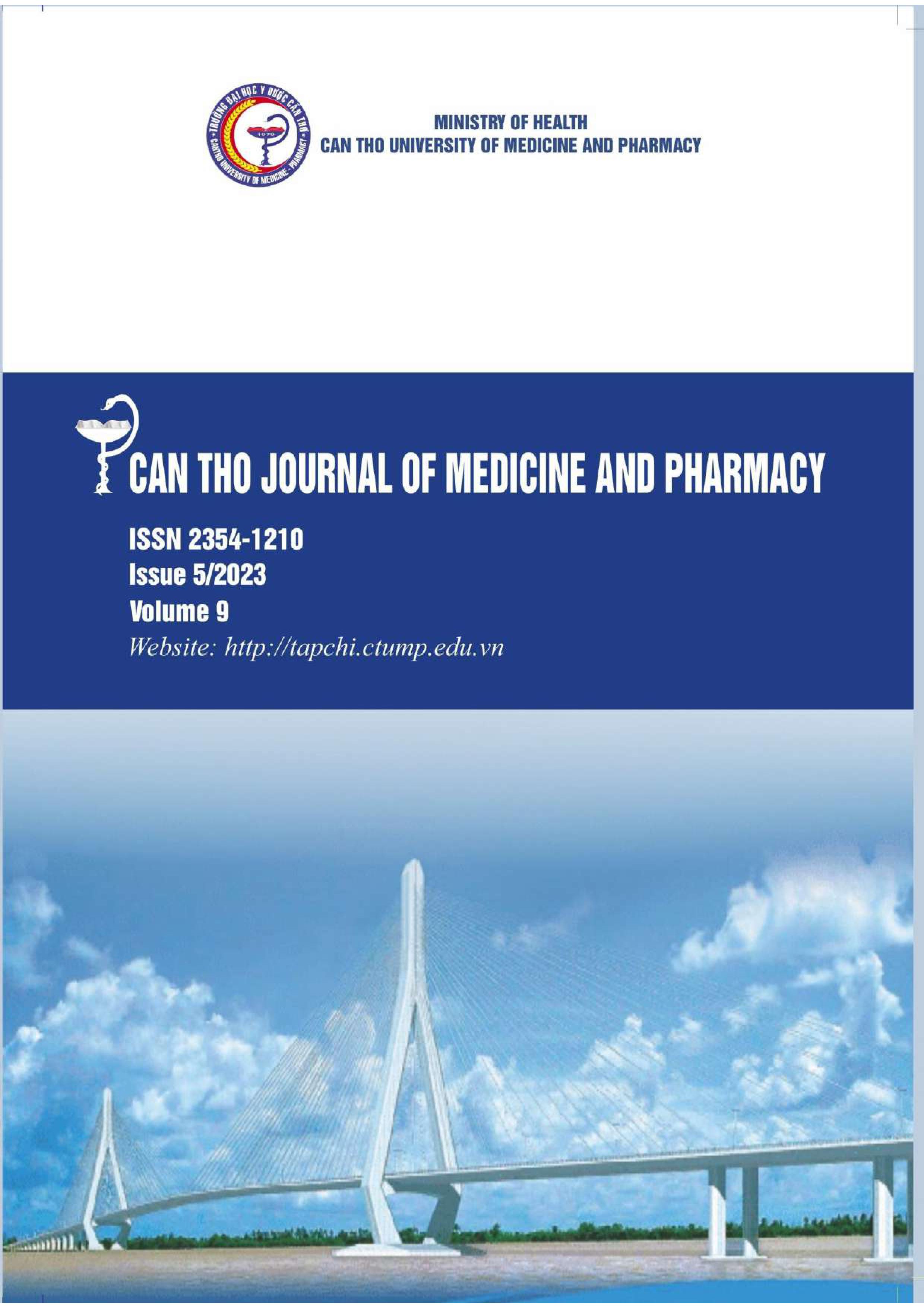EVALUATION OF THE EFFECTIVENESS OF ORAL AND VAGINAL MISOPROSTOL FOR INTRAUTERINE FETAL DEATH AND FETAL ANOMALY IN SECOND TRIMESTER PREGNANCY TERMINATION: A RANDOMIZED CLINICAL TRIAL
Nội dung chính của bài viết
Tóm tắt
Background: which method of the expulsion of intrauterine fetal death and fetal anomaly in second trimester is effective, safe, and suitable for pregnant women. Objectives: to evaluate the effectiveness of oral misoprostol and vaginal misoprostol for intrauterine fetal death and fetal anomaly in second trimester pregnancy termination. Materials and Methods: a clinical trial in 108 women experiencing intrauterine fetal death and fetal anomaly during the second trimester in the obstetric department, Can Tho central general hospital in 2014. Excluded criteria: multiple pregnancies, uterus cesarean section scar, and misoprostol contraindication. Intervention: randomized division into two groups: group 1: misoprostol oral, group 2: vaginal misoprostol; dosage as recommended by FIGO. Success was defined as a complete and natural fetal and placenta expulsion without dilation and curettage or other treatment; and healthy hospital discharge. Results: the success rate of group 1 was 75.9%; group 2 was 83.3%. The success rates for fetal conditions of intrauterine fetal death were 74.6%, and the fetal anomaly was 86.7%. In group 1, the success rate in intrauterine fetal death was 63%, fetal anomaly was 88.9%. In group 2, the success rate in intrauterine fetal death was 81.3% and fetal anomaly was 86.4%. The rate of expulsion in the first 24 hours was 78.1% in group 1; 88.9% in group 2, which was not different statistically. Some side effects encountered in the study such as headache, nausea, diarrhea, fever/chills, rash were mainly seen in the oral misoprostol group; all side effects and complications were mild and transient. Related factors to complete expulsion in both groups were gestational age, parity, and fetal conditions. Conclusion: vaginal misoprostol has the same effectiveness and fewer complications than oral misoprostol.
Chi tiết bài viết
Từ khóa
fetal anomaly, intrauterine fetal death, pregnancy termination, oral misoprostol, vaginal misoprostol
Tài liệu tham khảo
2. Amanda Cleeve, Marita Sporstøl Fønhus, Antonella Lavelanet (2019). A systematic review of the effectiveness, safety, and acceptability of medical management of intrauterine fetal death at 14–28 weeks of gestation. Int J Gynecol Obstet, pp. 1–12.
3. American College of Obstetricians and Gynecologists (2009). Abortion access and training. Committee Opinion. Obstetrics & Gynecology, 113(1).
4. Fatemeh Rahimi Sharbaf, Khadijeh Adabi, Mehrnaz Valadan et al (2015). The combination route versus sublingual and vaginal misoprostol for the termination of 13 to 24 week pregnancies: A randomized clinical trial. Taiwanese Journal of Obstetrics & Gynecology 54, pp. 660-665.
5. F. Gary Cunningham, Kenneth J. Leveno, Steven L. Bloom et al (2018). Abortion, induction and augmentation of labor. In Williams Obstetrics and Gynecology. 25th edition. Chapter 18, Chapter 26, pp. 346-370, pp. 503-515.
6. Geetha Fink, Sharon Gerber, Gillian Dean (2017). Misoprostol in abortion care: Review and update. Obstetrics and Gynecology Reports June. 6(2), pp. 100–108.
7. Hang-lin Wu, Sheeba Marwah, Pei Wang, Qiu-meng Wang & Xiao-wen Chen. Misoprostol for medical treatment of missed abortion: a systematic review and network meta-analysis. Scientific Reports. 2017. 7; 1664, pp. 1-9.
8. Huang MC, Hsieh CH, Huang JP et al (2017). Comparison of sequential vaginal and sublingual misoprostol after a vaginal loading dose for second-trimester abortion. Taiwanese journal of obstetrics & gynecology 56(3), pp. 312-314.
9. Ines Pereira, Susana Santo, Nuno Clode, Luis Mendes Graca (2014). The efficacy of vaginal misoprostol in second trimester medical termination of pregnancy a cohort study. Acta Obstet Ginecol port 8(1), pp. 14-18.
10. Jessica L. Morris1, Beverly Winikoff, Rasha Dabash et al (2017). FIGO’s updated recommendations for misoprostol used alone in gynecology and obstetrics. Int J Gynecol Obstet 138, pp. 363–366.
11. Mostafa Gamal Abdelhaleem (2022). Oral versus Vaginal Misoprostol in Management of Blighted Ovum. The Egyptian Journal of Hospital Medicine 88, pp. 4121- 4126.
12. Suyash S. Bhandekar, Anahita R. Chauhan, Arun Ambadkar (2018). Prospective comparative study of oral versus vaginal misoprostol for second-trimester termination of Pregnancy. The Journal of Obstetrics and Gynecology of India 8(6), pp. 456–461.
13. Zhila Abediasl, Mahdi Sheikh, Parichehr Pooransari et al (2016). Vaginal misoprostol versus intravenous oxytocin for the management of second-trimester pregnancies with intrauterine fetal death: A randomized clinical trial. The Journal of Obstet & Gynaecol 42 (3), pp. 246–251.


